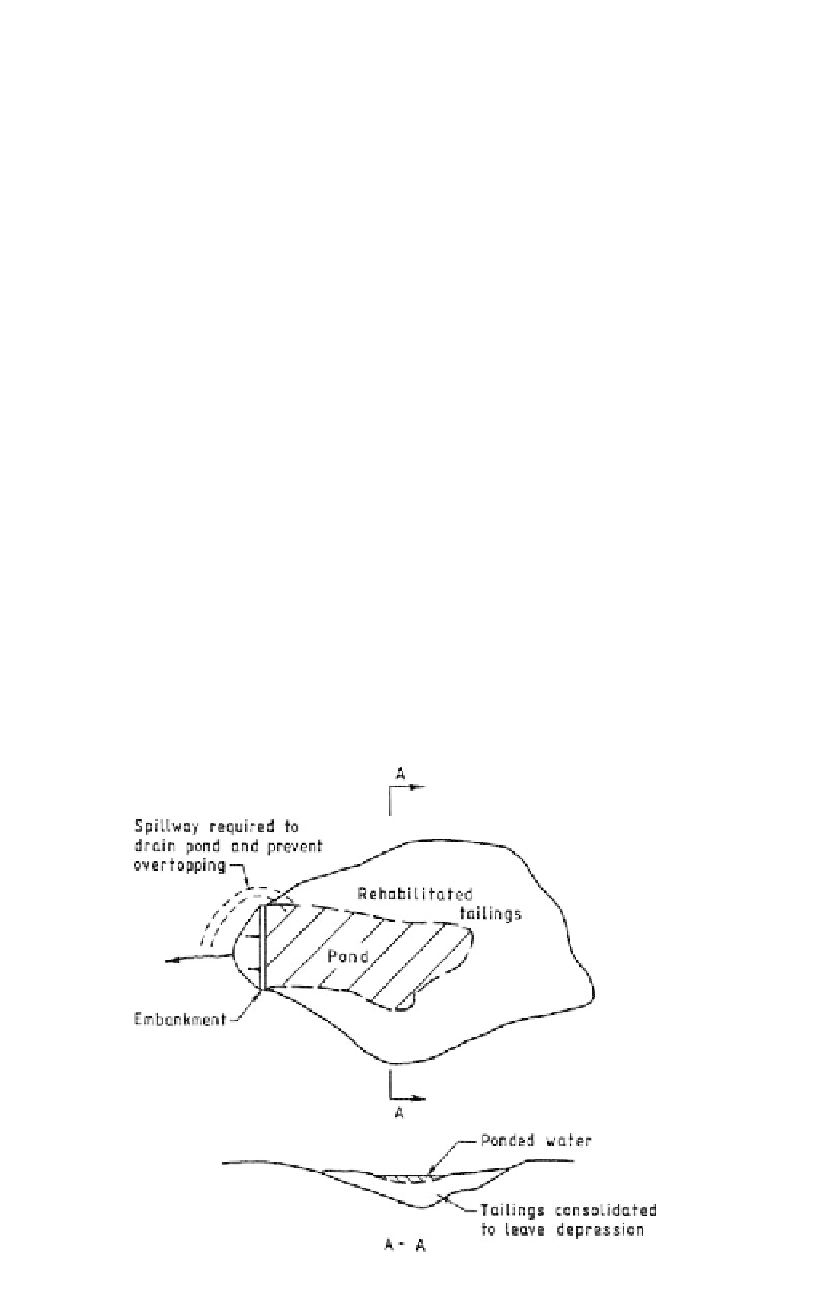Environmental Engineering Reference
In-Depth Information
quality in the stream between Dam B and the tailings storage. Seasonal effects can also be
important, e.g. if there is a prolonged dry season, water may pond in the stream and con-
centration of contaminants may occur.
The authors' view is that, in many cases, the catch dam with pump-back or dilution
may be far more appropriate than expensive measures to control the seepage. From the
authors' experience, too many engineers and regulators have an over optimistic view of
the efficacy of these seepage control measures, or an unrealistic view of the costs a mining
operation can reasonably bear to construct such measures.
19.6.6
Rehabilitation
After operation, tailings storages must be designed to contain the tailings indefinitely and
minimise long term impact on the environment. Factors are:
- long term stability of the “dam”;
- long term erosion;
- long term effect on groundwater and surface water;
-return of area to productive use.
19.6.6.1
Long term stability and settlement
Provided water is drained off the storage, stability and settlement should not be a prob-
lem because seepage piezometric pressures are reduced. It is important to ensure that
storm runoff cannot overtop the “dam”, or erosion from creeks etc. cannot erode the toe
of the “dam”.
Ponding of water on the tailings storage is likely to occur if tailings have been deposited
subaqueously with resulting low settled density and high compressibility. Figure 19.45
shows the sort of problem which can arise.
Figure 19.45.
Potential ponding after operation ceases.

